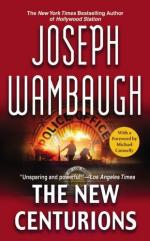|
This section contains 137 words (approx. 1 page at 300 words per page) |

|
The techniques Wambaugh uses can be traced to Daniel Defoe (1660-1731) who wrote with great realism about crime and the city. Jonathan Swift (1667-1745) too, was a master of graphic, even scatological description.
Charles Dickens's (1812-1870) novels often concerned crimes committed in an urban setting and described grotesque characters living in hideous slums. Wambaugh's novels are also similar to the writings of Theodore Dreiser (1871-1945) who wrote about crime and the seamier side of the American city with great realism in An American Tragedy, and James T. Farrell (1904-1979),a contemporary writer, who dissected the slums on the South Side of Chicago in his 1930s Studs Lonigan trilogy. Wambaugh is in the tradition of those novelists who write realistically about the sordid side of city life and those who must cope with it.
|
This section contains 137 words (approx. 1 page at 300 words per page) |

|




